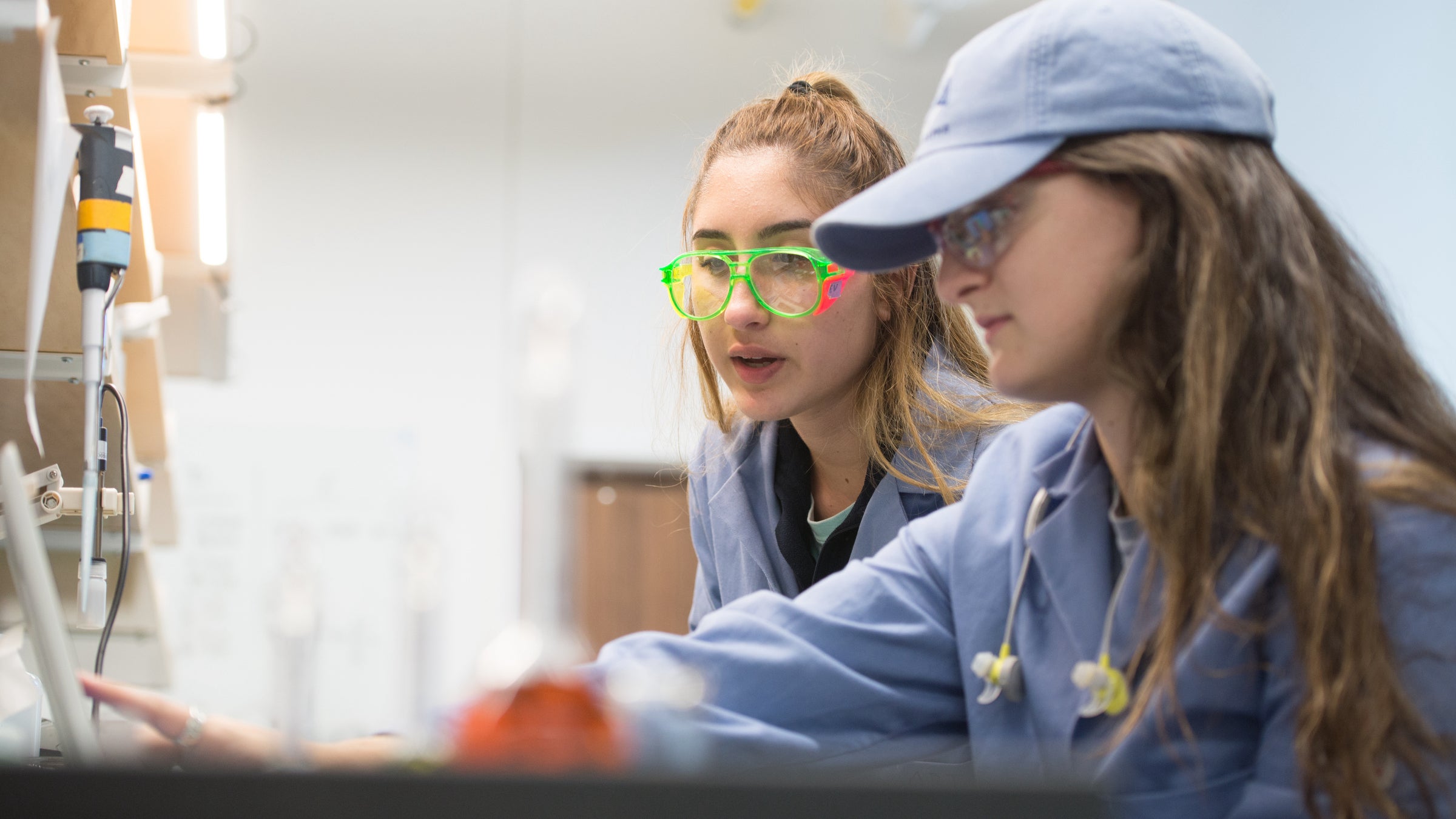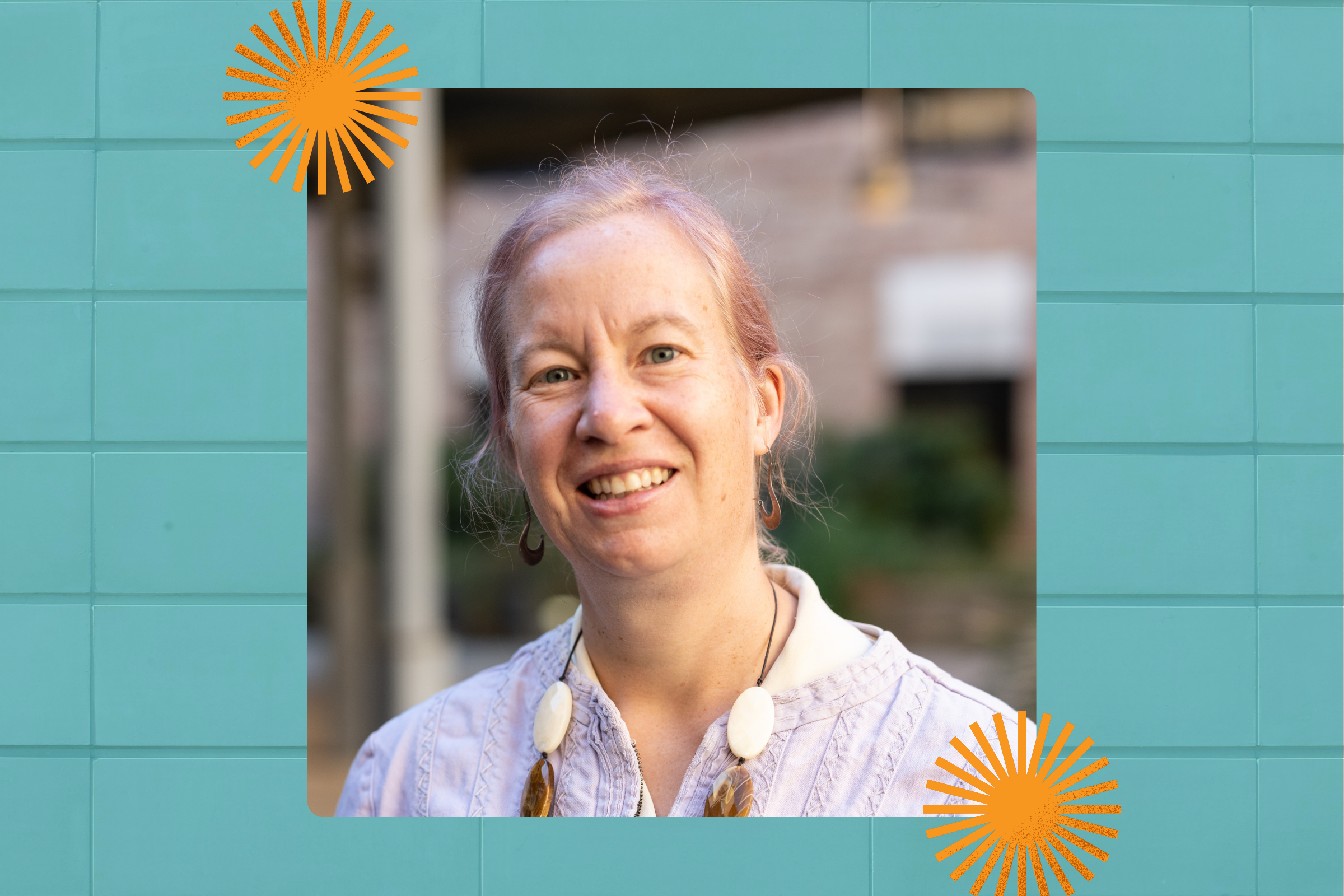Undergraduate Experiences in Freshman Research Initiative Deliver Lasting Benefits
A new study finds that the Freshman Research Initiative (FRI) experience translates to higher earnings for participants later on.

Each year, the American Junior Academy of Science invites the nation's top pre-college researchers to tour a premiere university's campus and meet with the people there who are doing cutting-edge research in scientific labs every day. This year, dozens of high-school scientists-in-training took their tours at The University of Texas at Austin, where they met researchers different from whom they might have expected.
Here, many of the pioneering researchers are only a year or two out of high school themselves.
The recent tours occurred in Freshman Research Initiative laboratories—dedicated spaces where first- and second-year students conduct research alongside more seasoned scientists to explore real-world scientific questions. The university's FRI program has won multiple higher-education awards and received dozens of mentions in peer-reviewed papers about how to make STEM education more effective for students. The latest study focused on FRI, published in today's edition of CBE – Life Science Education, finds that the FRI experience translates to higher earnings for its participants.
"For every $1 that the university invests in FRI instead of alternative lab courses, students receive a return of more than $4 in earning potential in their first year out of college," said Stacia Rodenbusch, director of the Freshman Research Initiative and one of the authors on the new paper. "That's 19 percent greater earnings than their peers in the first year after graduation and 16 percent greater earnings over their lifetime."
To reach these conclusions, Rodenbusch and the other authors applied a method known as benefit-cost analysis to available data about the FRI. Upfront, FRI costs the university about $1,000 more than a traditional lab course for each student served. However, the new study looked at likely earnings for these students, within the context of earlier research that carefully matched FRI participants with peers; that study found students in the Freshman Research Initiative were half as likely to drop out of college compared to their peers and significantly more likely to obtain a STEM degree specifically. Both graduating from a university and earning a degree in the sciences are correlated with higher earnings.
For years, participating in early undergraduate research experiences has been considered a critical strategy for helping students persist in science, which has higher drop-out rates than many other majors. A 2013 paper in the journal Science suggested early research, of the type that happens in the FRI, is as important for effective STEM education as having active learning in the classroom and supportive learning communities for students. Yet no other University offers early undergraduate research at the scale and with the variety that UT Austin does.
The College of Natural Sciences, following recommendations for action set in its strategic plan five years ago, has managed to expand FRI by more than 40 percent since 2013. FRI now includes 30 unique, faculty-led research streams in which more than 1,000 student researchers conduct experiments and explore questions in chemistry, physics, the life sciences, computer science and math. Over the years, students in the program have contributed to more than 200 papers in scientific journals spanning a wide variety of research topics.
"This model enables undergraduates to be productive contributors to new knowledge and scientific discovery at the earliest levels of the undergraduate experience," said Eman Ghanem, a former research educator in FRI, now with the scientific research society Sigma Xi. Ghanem was first author on another peer-reviewed paper about FRI published at the end of last year in the Journal of Chemical Education, which argues more universities can adopt FRI-like models for early chemistry courses.
Rodenbusch hears regularly from other institutions that would like to implement programs similar to FRI. She hopes that papers like the two recent ones provide a resource to help STEM educators make the case to stakeholders in their communities for investing in FRI.
Meanwhile, efforts to expand FRI to serve all the students who are interested in the experience at UT Austin continue. Two critical elements for reducing the waiting list for the program, Rodenbusch believes, are finding faculty who have creative ideas for putting early researchers to work and partnering with supportive donors in supporting the initiative.
"We're getting more and more efficient every year and that opens the possibility of expansion further and further," Rodenbusch said. "That matters because there are exponential impacts, above and beyond what you would expect even from a direct student scholarship. As our new paper shows: we're talking more dollars in the pockets of our students when we invest in a program like this."



